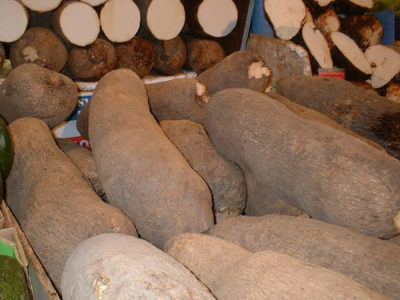The yam is often mistaken for the sweet potato, especially in the United States. But, the yam is a totally different root vegetable! In fact, yams are more closely related to lilies and grasses, and sweet potatoes are in the same family as morning glories. These edible tubers, a variety of species in the plant genus Diaoscorea, are native to West Africa and vary greatly in size, shape, and color, depending on the cultivation. So, if you live in the U.S., how do you differentiate between yams and sweet potatoes? Yams tend to have rough, scaly skin that does not peel well; be more long and cylindrical in shape; and be more starchy and dry in taste and mouthfeel.
The nutrition in yam is about what you would expect from a tuber: it is very dense in starches and has some dietary fiber but does not have much by way of fat or protein. But, yams do provide at least some of every dietary vitamin and mineral! It is most densely a source of vitamin C, vitamin B6, manganese, and potassium.
Yams might be more difficult to find than other, more common root vegetables included in the Paleo diet. Check out your local natural grocery store, and ask the grocer to include yams if you don’t have access to them yet!


 Lean Ground Beef
Lean Ground Beef